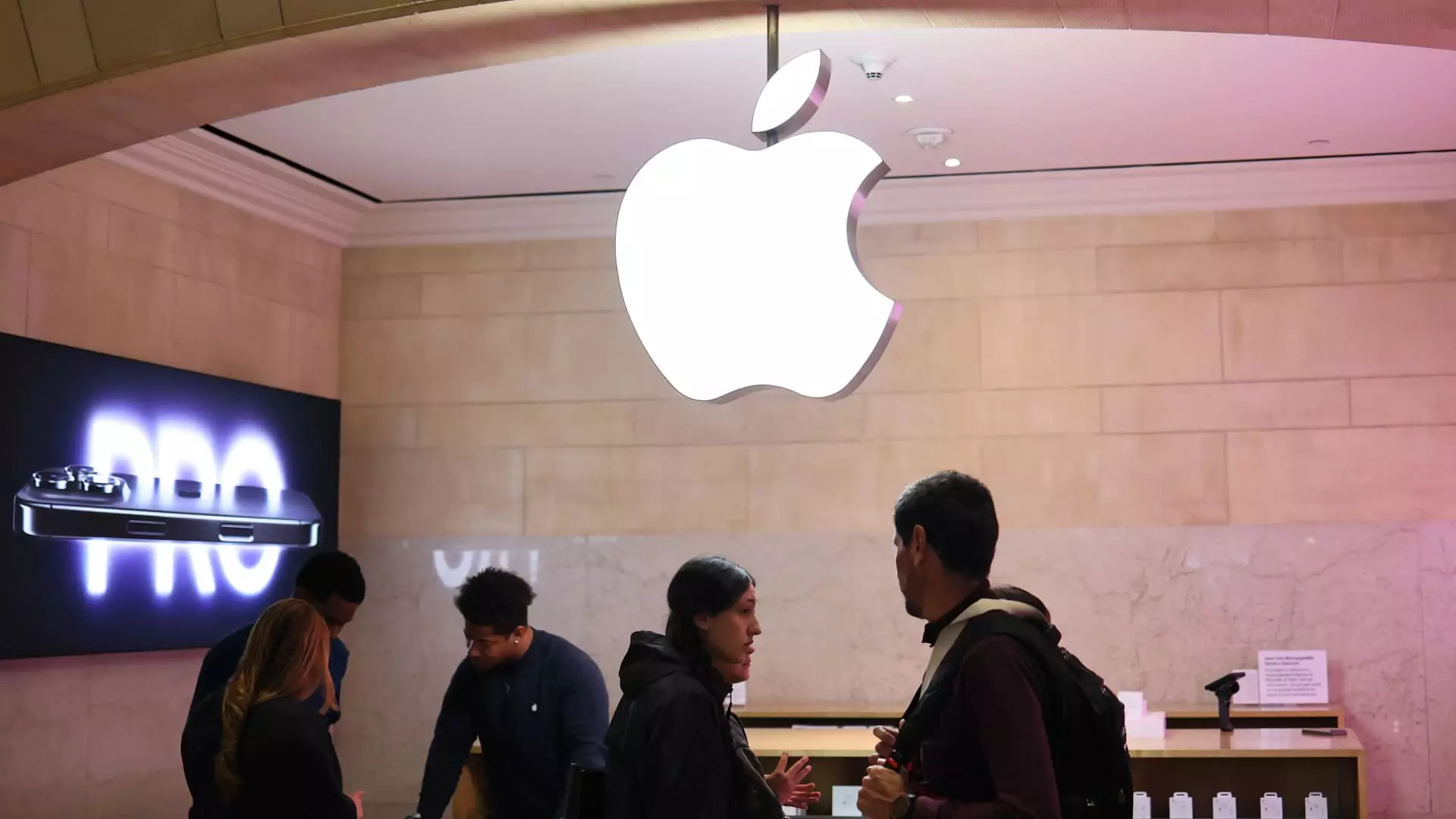The saga of Apple Inc. has always been a mixture of daring innovation and strategic finesse. But amidst political upheaval and economic uncertainties, the company’s forecast is dimming. Wedbush Securities analyst Dan Ives has raised a clarion call regarding the repercussions of President Donald Trump’s rampant tariff regime that could unravel Apple’s tightly-woven business model. While many Wall Street analysts continue to exhibit optimism towards Apple, it’s time to critically evaluate the underlying threats and vulnerabilities that lurk beneath the glossy veneer of its market dominance.
Tariffs: The Economic Sword of Damocles
The trade policies initiated by the Trump administration have inflicted significant wounds on U.S. tech giants, with Apple standing at the forefront of the financial carnage. Ives succinctly described the situation as an “economic Armageddon,” and his largely unchanged long-term favorable view on Apple raises some eyebrows. With a staggering 90% of iPhones produced in China, any fluctuations in tariffs inevitably resonate loudly within Apple’s earnings reports. The intentional escalation of tariffs—namely the steep declines imposed initially and retaliatory measures from China—has paved the way for a situation where the cost of doing business could surge out of control.
Even more alarming is Ives’s assertion that it might take Apple a colossal three years and around $30 billion just to move a meager 10% of its supply chain back to the U.S. This begs the question: Is it reasonable to expect a significant and swift pivot towards domestic manufacturing when the stakes are this high? The reliance on China is not merely a footnote in Apple’s operations; it is the backbone of its supply chain. Any disruption is bound to be catastrophic, both in terms of financials and consumer trust.
A Pricey iPhone: The Consumer Consequence
As if the internal struggles weren’t enough, the cascading effects on consumers warrant grim consideration. Should tariffs continue to escalate, the price point of the iPhone—now sitting comfortably at around $1,000—might climb to unimagined heights. Ives expressed concern that such increases would alienate a large demographic of potential buyers, transforming a premium product into a luxury item. For a company that has relentlessly championed the ethos of accessibility in technology, it is nothing short of a paradox.
The prospect of diminishing sales can be further accentuated when Ives notes the broader repercussions on Apple’s gross margins. The innovative giant may have become synonymous with quality and cutting-edge technology, but rising prices could fracture its core consumer base, leading to demand destruction both domestically and globally. The delicate equilibrium Apple has maintained between profit generation and consumer accessibility is at risk of tumbling down with each new tariff announcement.
Uncertainty Breeds Inaction
One must also question the broader implications of uncertainty riddled throughout the tech industry. With the ambiguity surrounding tariffs, many companies—including Apple—are likely to adopt a defensive strategy, refraining from providing forward financial guidance. This self-imposed paralysis will do little to allay investor concerns, instead fostering an environment where cautious optimists find it challenging to make confident forecasts. The escalating unpredictability ensures that the current trend of “wait and see” is unlikely to end soon.
Moreover, the overall sentiment within the investor community reflects a certain level of detachment from the realities on the ground. While 32 of 47 analysts maintain a buy rating for Apple, they appear to overlook the disruptive potential unleashed by escalating tariffs—an oversight that could lead them to a harsh awakening should conditions deteriorate further.
A Long Road Ahead
Apple’s aspiration of reshaping its manufacturing landscape must grapple with ingrained complexities. The road to revamping its supply chains is formidable and riddled with obstacles that even a behemoth like Apple may find insurmountable in the short term. Individuals interested in the tech giant’s trajectory should recognize that the challenges ahead are not merely ephemeral. They signify a monumental shift in the industry paradigm that could alter the course for Apple and its tech compatriots.
As the landscape continues to evolve, it remains crucial for stakeholders—whether they are investors, consumers, or analysts—to engage in realistic assessments of Apple’s performance relative to external challenges. Daring to dream of future successes is commendable, but it must be coupled with an acknowledgment of the pressures that could usher in unprecedented disruptions. The future of Apple may not be as rosy as it appears.

